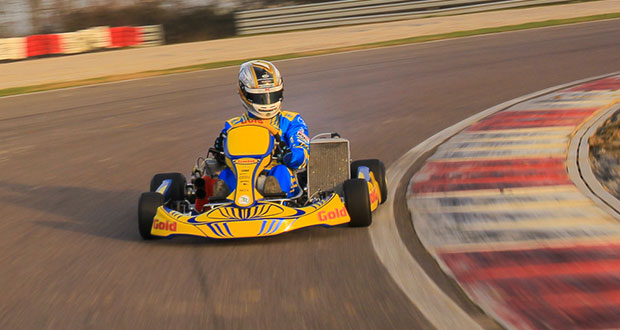The four-time world champion and great karting veteran reveals all his driving secrets for taking chicanes, performing throttle-offs and braking, as well as everything it takes to be a true racing driver.
TO LEARN
Talking generally, the key is finding the right point that in each bend allows you to give gas earlier, while still coming out smoothly.
It’s something you understand lap after lap. The next thing you want to figure out is your braking limit. Generally, between apex and exit, you should already be full throttle: if you wait too much, you won’t have enough speed coming out.
Figuring out when you can ease off the brake is also something you discover a little at a time: if you are new to a track, you obviously can’t tackle bends as if you knew them well.
So keep calm and try to ease off the brake a little earlier every time.
TIGHT HAIRPIN
Evidently, exists a lot of bends type. Talking about hairpins, for example, they require a greater steering angle. The general rule is to avoid going in too tight, or you’ll have a drop in rpm’s as you come out that will hold you back.
Once you figure out the brake-point, keep wide going in, and then try to keep close to the curb at mid-bend to ensure a smooth exit.
Of course, if you have to face a sequence of hairpins like in Lonato, you can’t come out wide, because you don’t have enough time to set up your line for the next one.
However, if the curve leads to a nice straightaway, you want to go in wide, keep close to the curb at the apex, and keep wide on the way out so your engine will rev up sufficiently to face the straight patch.
FAST LONG CURVE
In this type of bends, the main thing is to keep your wheels from locking up and maintaining your rpm’s and your speed on the high end.
Ease onto the brake and take some speed right into the bend; keep a clean line and steer as little as possible - ideally just once, as you enter the curve.
If the curve has a long radius, you have to ...(keep reading on "CHAMPION ADVICE" TKART Magazine channel)



 Log in on TKART
Log in on TKART

